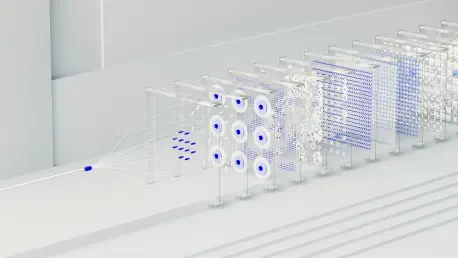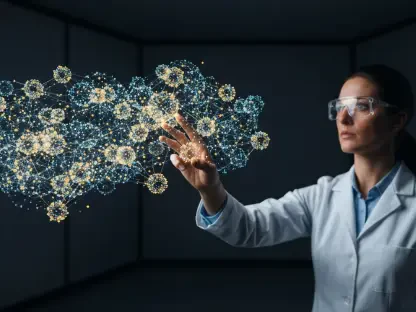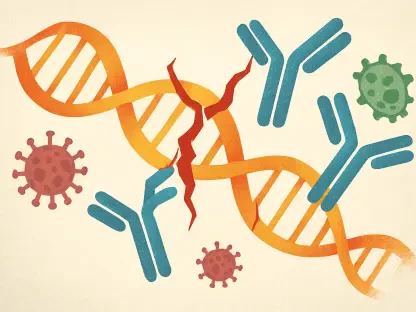Recent advancements in neuroscience have provided compelling insight into the brain’s reward system, creating a buzz in scientific circles worldwide. Central to this discussion is the ventral tegmental area (VTA) of the brain, which plays a vital role in motivation and action in response to positive stimuli. The complexity of the VTA in encoding anticipation and predicting rewards is being unraveled, revolutionizing our understanding of this crucial brain mechanism. This evolution in comprehension has been significantly facilitated by artificial intelligence (AI), which complements neuroscience investigations. AI’s ability to enhance analysis and data interpretation is shedding light on the intricate processes occurring in the brain, transforming foundational scientific concepts into multifaceted frameworks ready for application.
The Ventral Tegmental Area’s Role
Predicting Reward Dynamics
Traditionally, the VTA was understood mainly as a predictor of rewards, activating dopamine release upon immediate stimulus. However, recent studies suggest a deeper function, indicating that the VTA encodes precise temporal expectations of rewards. This represents a considerable shift from the notion of mere prediction. It turns out the VTA prepares the brain by responding to contextual signals even before the actual reward materializes, adding a layer of sophistication to its role in the cognitive process. The University of Geneva, in collaboration with Harvard and McGill Universities, has been at the forefront of this research. Their findings emphasize that the VTA manages both immediate and deferred gratification processing, prioritizing rewards over varying time scales.
Sequential Learning and Adaptability
Sequential reinforcement learning within the VTA exemplifies its nuanced role. Unlike previous understandings centered on cumulative reward prediction, the VTA’s ability to forecast reward evolution is now recognized. This process involves neurons functioning on diverse time scales, adapting and shifting attention based on individual goals and immediate environmental cues. This adaptability facilitates the optimal balance between satisfaction achieved instantly and future potential benefits, underscoring the learning system’s flexibility. AI has played an integral part in deciphering this functionality, aiding in the development of machine learning algorithms that integrate temporal aspects of reward processing. This synergy between AI and brain studies has provided insights into balancing immediate and deferred rewards, fostering goal-oriented behavior enhancements.
AI: A Catalyst in Neuroscience
Cross-Disciplinary Collaborations
Artificial intelligence has emerged as a catalyst, transforming neuroscience by uncovering complexities of brain functionality. The melding of AI with neuroscience research has introduced novel methodologies that surpass the limitations of traditional studies. The intersection of these disciplines is creating a dynamic, iterative process that propels deeper comprehension of brain responses, making it possible to unravel processes previously shrouded in mystery. AI algorithms contribute to this endeavor by simulating and modeling neurophysiological processes, extending beyond simplistic observational techniques. These collaborative efforts underscore a two-way street; while AI aids in comprehension, it concurrently derives inspiration from neurological advancements, fostering an ongoing cycle of innovation.
Enhancing Understanding and Application
The application of AI within neuroscience not only enhances understanding but enables the practical application of insights gained. The enhanced knowledge of the brain’s reward system is proving crucial for fields ranging from psychology to behavioral economics, providing a basis for real-world implementation. By refining algorithms and learning models, AI contributes to creating environments that balance instant gratification with future successes, which is aiding in crafting strategies for education, therapy, and self-improvement. This shared contribution clarifies AI’s role in amplifying the insights derived from neurological studies and subsequently influencing technological advancements. As these collaborations deepen, they highlight the promise AI holds in translating complex brain activities into actionable insights.
Future Direction and Implications
Adaptability in Behavior
The exploration of AI’s role in neuroscience has opened new doors, revealing adaptive strategies inherent in the brain’s reward system. By developing sophisticated representations that balance immediate and deferred gratification, the research underscores adaptability crucial for goal-driven behavior. These findings have broad implications for understanding human conduct and developing tools that align actions towards beneficial outcomes. The adaptability is central to navigating environments demanding quick response alongside calculated foresight, enhancing behavioral proficiency across various domains.
Continuing Synergy Between AI and Neuroscience
Traditionally, the ventral tegmental area (VTA) was understood primarily as a predictor of rewards, triggering dopamine release in response to immediate stimuli. However, recent research reveals a more intricate function. Studies indicate that the VTA also encodes precise temporal expectations about rewards, signifying a substantial shift from simply predicting them. This research suggests the VTA prepares the brain by responding to contextual signals even earlier than the actual reward appears, illustrating a more complex role in cognitive processing. The University of Geneva, in partnership with Harvard and McGill Universities, has been leading this innovative research. Their findings emphasize that the VTA plays a key role in managing both immediate and future gratification, prioritizing rewards across different timeframes. It fine-tunes responses to time-based cues, enhancing adaptability to varied reward timings, showing its role is not only about predicting rewards but about organizing our expectations and responses over time.









